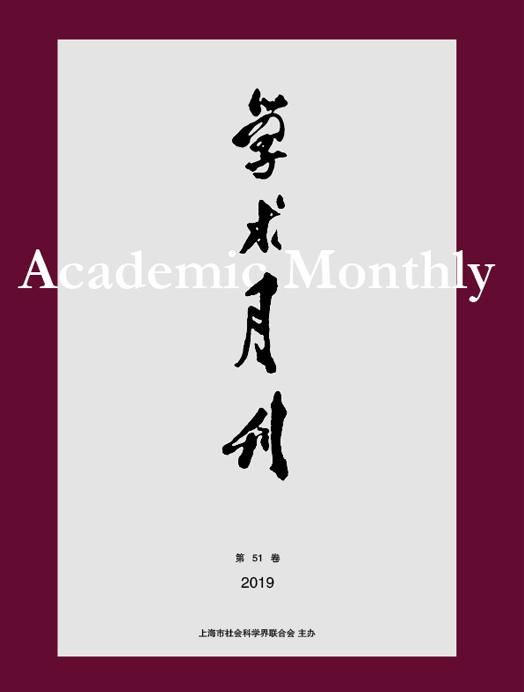Citation:
Dan HUANG. Newspaper and Newspaper Offices: Two Perspectives to Examine the History of Chinese Newspapers and Periodicals[J]. Academic Monthly, 2020, 52(10): 165-178.

Newspaper and Newspaper Offices: Two Perspectives to Examine the History of Chinese Newspapers and Periodicals
-
Abstract
Taking Ge Gongzhen and Liang Qichao as examples, this study unravels and compares “newspaper” and “newspaper offices” as distinct historical perspectives. Thereby, it posits that the “newspaper” as conceived by Ge Gongzhen draws inspiration directly from the archetype of professional newspapers. While underscoring the content and formal characteristics of newspapers, Ge de-contextualized newspapers historically, reducing it into a ready-made standard object set in advance. By so doing, Ge treated the history of newspapers as a continuous process of evoluationtowarrds such standards. In contrast, Liang Qichao conceived “newspaper offices” as part of the state organism, which aid the state to “remove obstructions and promote fluent interaction”. Within this structural-functional framework, the history of newspapers becomes a process for practitioners to fulfil their mission to “serve the national interest”. In conclusion, this paper advocates that scholars re-comprehend newspaper’s role of “removing obstructions and promoting fluent interaction” on the footing of human communication. Using media’s “promotion of fluent interaction” as a perspective, and adopting mediated practice as an approach, scholars should set eyes on the connections and transformations made possible by media dielectric, and render the history of newspapers a history of the mode of constitutive, confrontational, encountering and transformative relations enabled by newspapers between humans, things and society.
-

-
References
-
Access
-
-
[1]
,
,
. . Academic Monthly,
2017, 49(01): 177-178.
-
[2]
Tangfa CHEN
. Media Culture: Life style of Category of Ethics or Right. Academic Monthly,
2019, 51(12): 151-158, 179.
-
[3]
ZHAO Jianguo
. The Spread of Concept Sea Power on Press in Late Qing Period. Academic Monthly,
2023, 55(6): 193-205.
-
[4]
Rong MA
. “Barbarian” Domination in the Core Area in the History of Cultural and Political Interactions in China. Academic Monthly,
2019, 51(2): 167-175.
-
[5]
Jianxue XIONG
. Records in Skeletal Remians: Human Osteoarchaeology and the Restoration of Social Life History. Academic Monthly,
2022, 54(9): 183-191.
-
[6]
. . Academic Monthly,
2017, 49(05): 128-134.
-
[7]
Jian’guo JIANG
. The Geography of Newspapers, News Presentation and the Reader’s Response during the Sino-Japanese War Period. Academic Monthly,
2018, 50(12): 153-165.
-
[8]
Meifang YU
. Define Song Study and Identify New Trend: The Academic Purport of Qian Mu’s History of Chinese Academic Research in the Recent Three Hundred Years. Academic Monthly,
2020, 52(10): 149-164.
-
[9]
Xiaoyu LI
. How Do Images “Serve the History”. Academic Monthly,
2022, 54(12): 153-164.
-
[10]
Guorong YANG
. “Affair” and “History”. Academic Monthly,
2019, 51(1): 11-23.
-
[11]
Jie MENG
. Surplus Value and Socialist Political Economy with Chinese Characteristics: An Investigation from Intellectual History. Academic Monthly,
2021, 53(2): 65-74.
-
[12]
Haifeng JING
. Classics: From Studies to History. Academic Monthly,
2019, 51(11): 5-14.
-
[13]
. . Academic Monthly,
2017, 49(12): 134-143.
-
[14]
Fulin CHAO
. A Supplementary Explanation of the Inscriptions in “Historical Wall Plate”. Academic Monthly,
2019, 51(11): 150-157.
-
[15]
. . Academic Monthly,
2017, 49(10): 9-12.
-
[16]
Qingshan YAN
. A Conceptual History and Philosophy of Understanding. Academic Monthly,
2021, 53(6): 45-57.
-
[17]
Yaqiu LIU
. Oral History as a Method of Community Research. Academic Monthly,
2021, 53(11): 123-131.
-
[18]
Jian YUAN
. From the General Intellectual History to the Intellectual History of Borderland. Academic Monthly,
2020, 52(11): 160-167.
-
[19]
,
. . Academic Monthly,
2016, 48(12): 174-179.
-
[20]
Ping CHEN
, Xianliang FENG
. From Economic History to Cultural History: A Review on Issues of Traditional Jiangnan Studies. Academic Monthly,
2020, 52(6): 148-161, 178.
-
-



 沪公网安备 31010102003103号
沪公网安备 31010102003103号 DownLoad:
DownLoad: